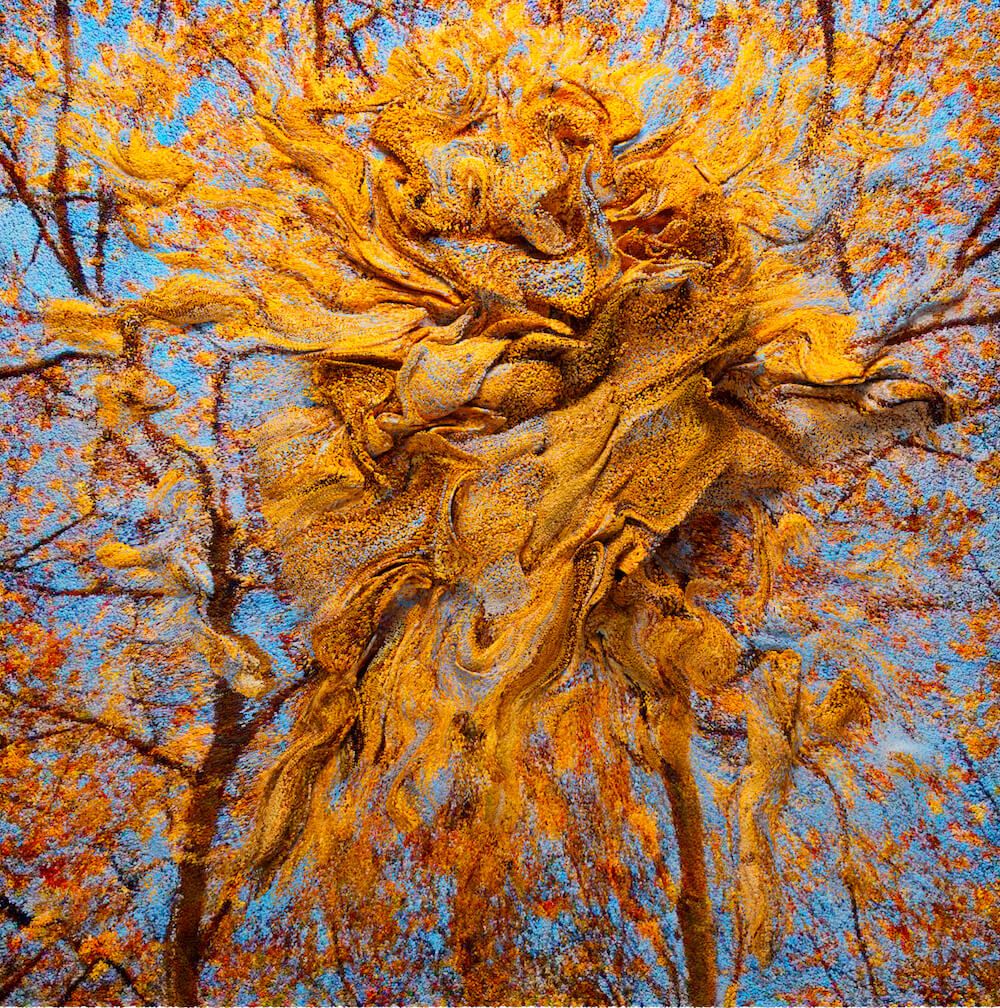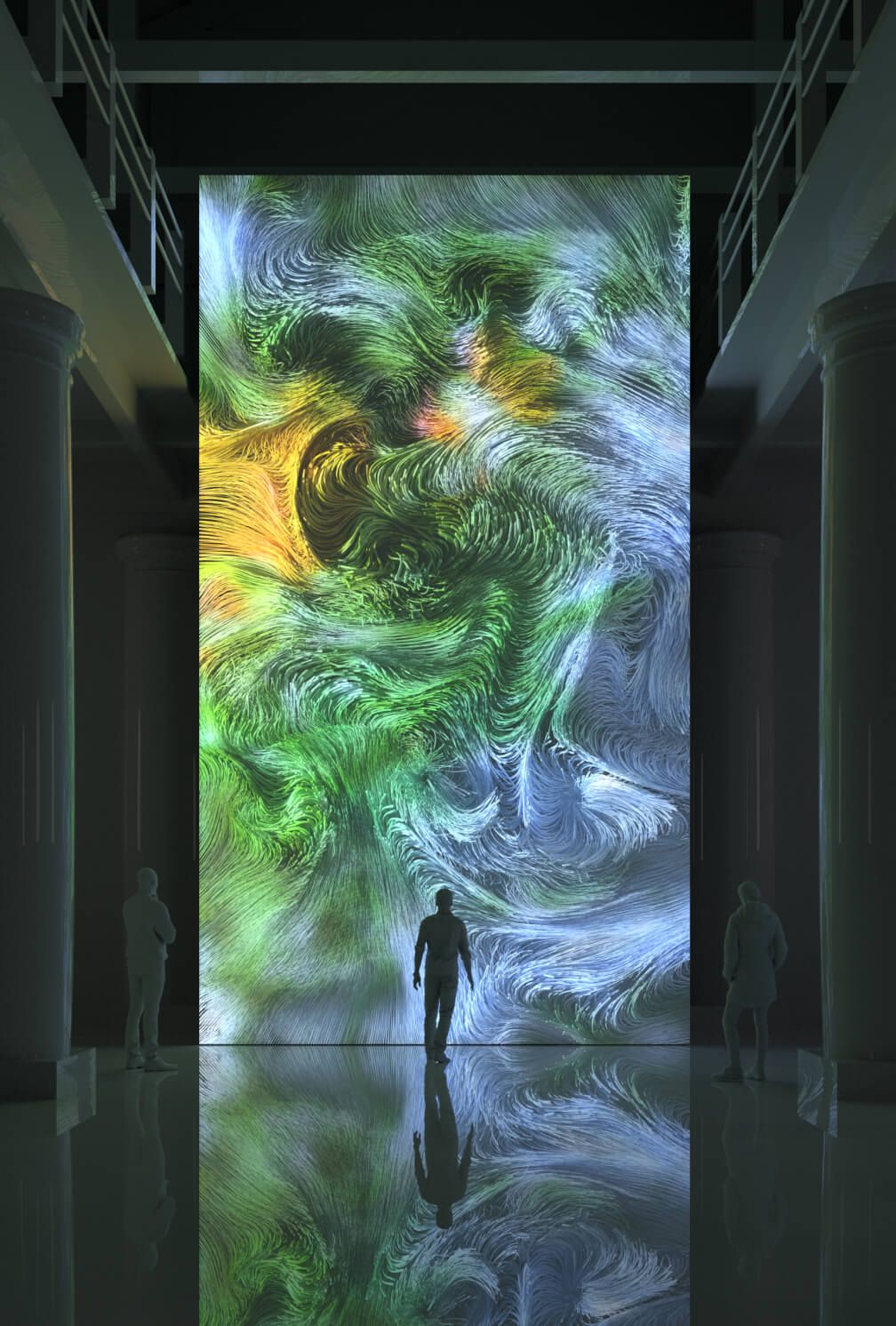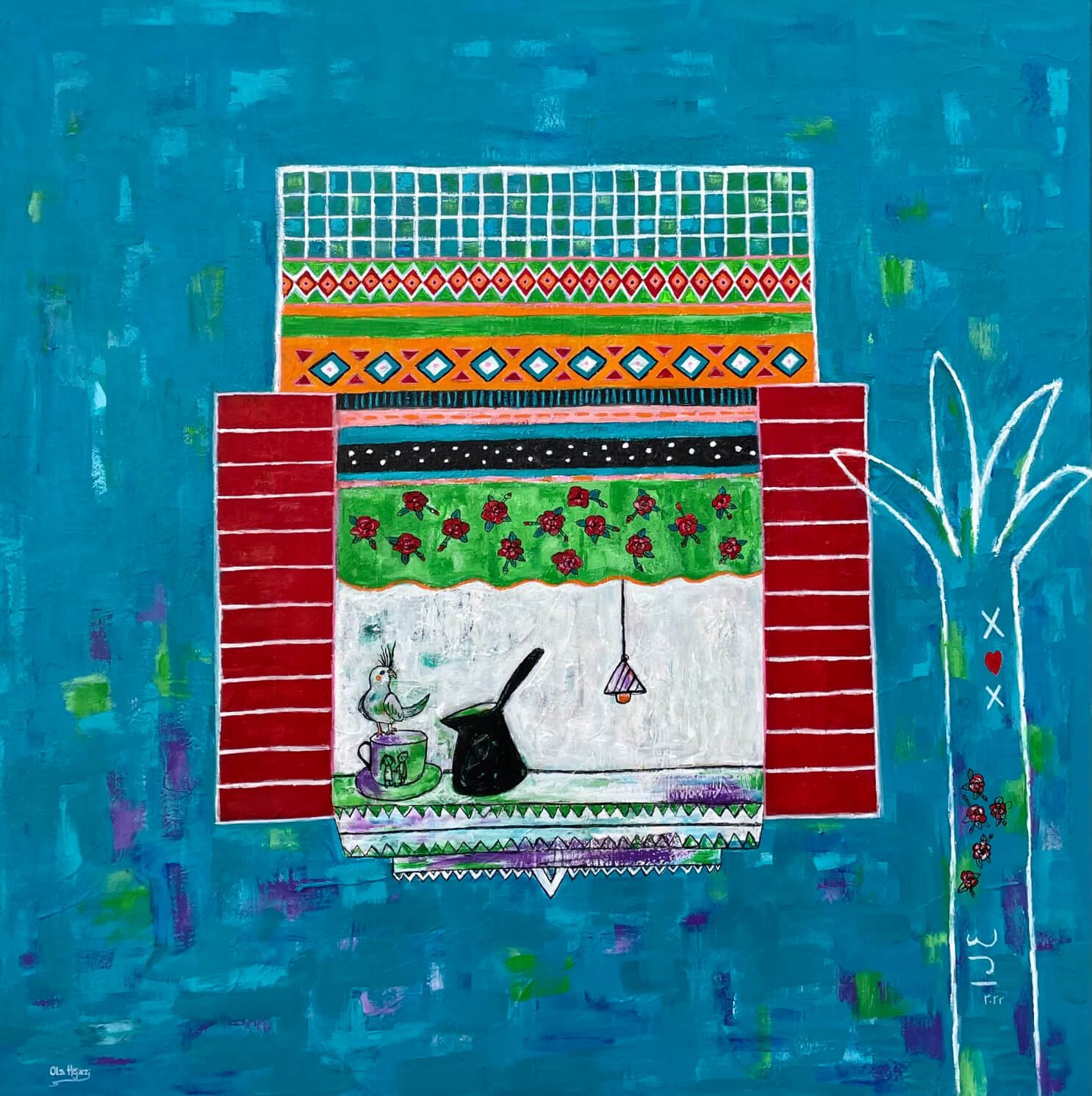Our cities, our stories -An Abha Story
To speak in synergy. 2022. Courtesy of the artist
Artist Hoda Zohrob
Hatem Al-Ahmad is a visual artist, who lives and works in the city of Abha, and is famous for his unique style that combines many types of art. His paintings explore the ambiguity of his creative imagination. Al-Ahmad's paintings reflect his reflections on society and the state of the world around him, as the subjects of his paintings are inspired by the society's culture and its contemporary condition, all the way to the environment and climate change causing forest fires surrounding the magnificent city of Abha. His works include many unique and diverse artistic and plastic formations, and the beauty of his paintings lies in their details.
Ithraeyat conducts an interview with the artist Hatem Al-Ahmad, in which he talks about the beauty of his city, which is one of the most important resorts and tourist cities in the Kingdom, and his upbringing in it, and how the diverse and picturesque environment of this city contributed to unleashing his artistic sense.
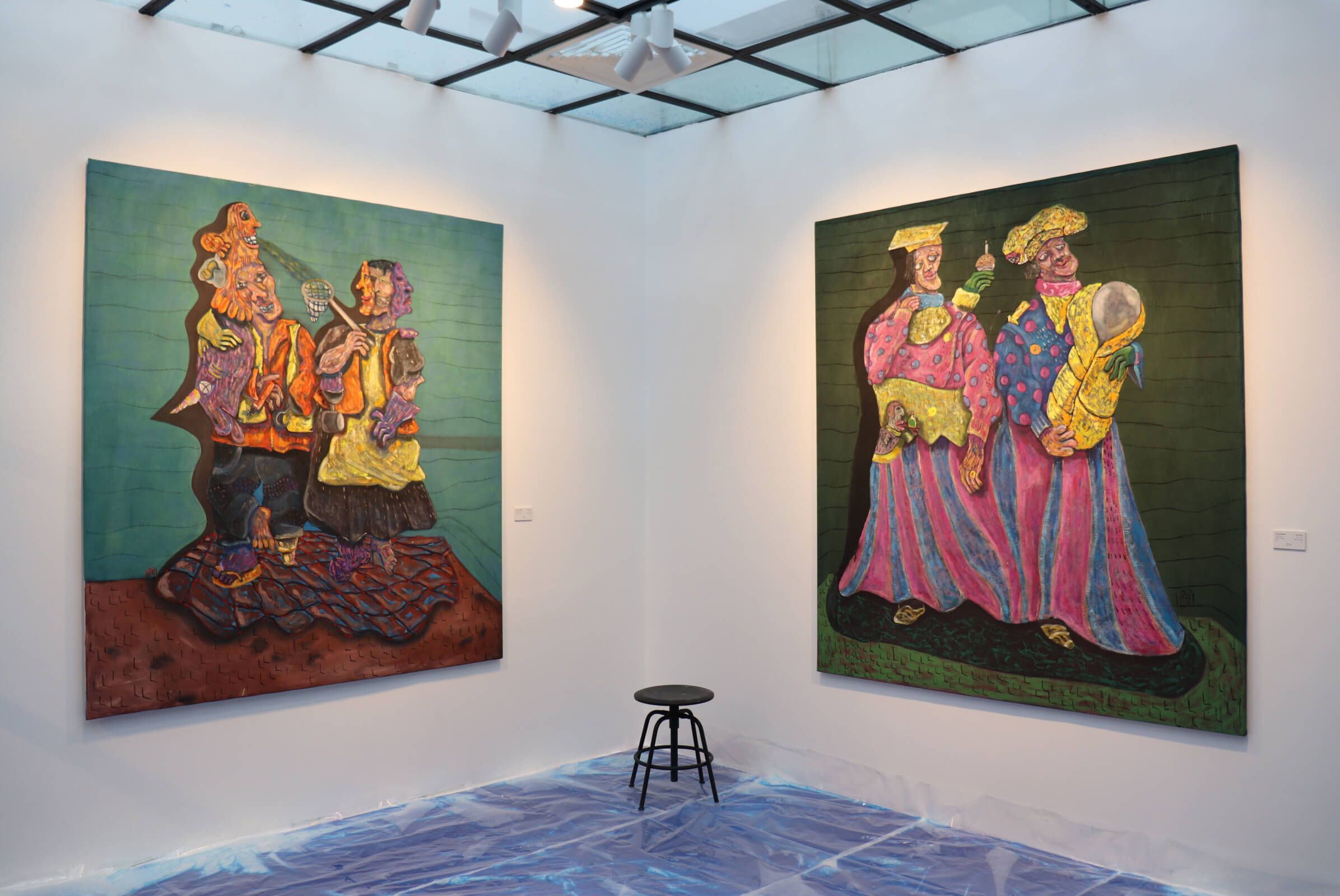
Shared individuality, 180X200cm. acrylic on canvas. From the artist first solo exhibition “What is there to fear of damp”, 2022. Courtesy of the artist.
Q1. At the outset, tell us about your city, Abha, and how did it affect your artistic sense?
The city of Abha has a unique cultural and environmental character, its wonderful location combines many diverse environments that would form a distinctive character on the human level, so I find in the city of Abha a fertile environment from which my artistic practices stem, as that city has dimensions that combine an abundance of innate diversity and natural and raw materials and between the diverse human heritage that is based on the uniqueness of the geographical nature and the extent of its diverse climate. This abundance provides me with a great ability to deal with various environmental issues in a contemporary visual way, starting from the past and crossing into the future. That is why the idea of working in Abha as a contemporary visual artist was a positive choice that coincided with my artistic aspirations.
Q2. What is your favorite memory from growing up in Abha?
I consider growing up in the city of Abha something special, particularly on the artistic level, specifically since that upbringing was in the (Al-Muftaha) art village. That period was one of the most beautiful periods in which I began to get acquainted with the arts, and to receive all that is essential within this field, as the village was a meeting place for artists, writers and various cultural segments in and outside the Asir region. I find in them memories that make me feel optimistic about the future of culture and arts in the southern region in general.
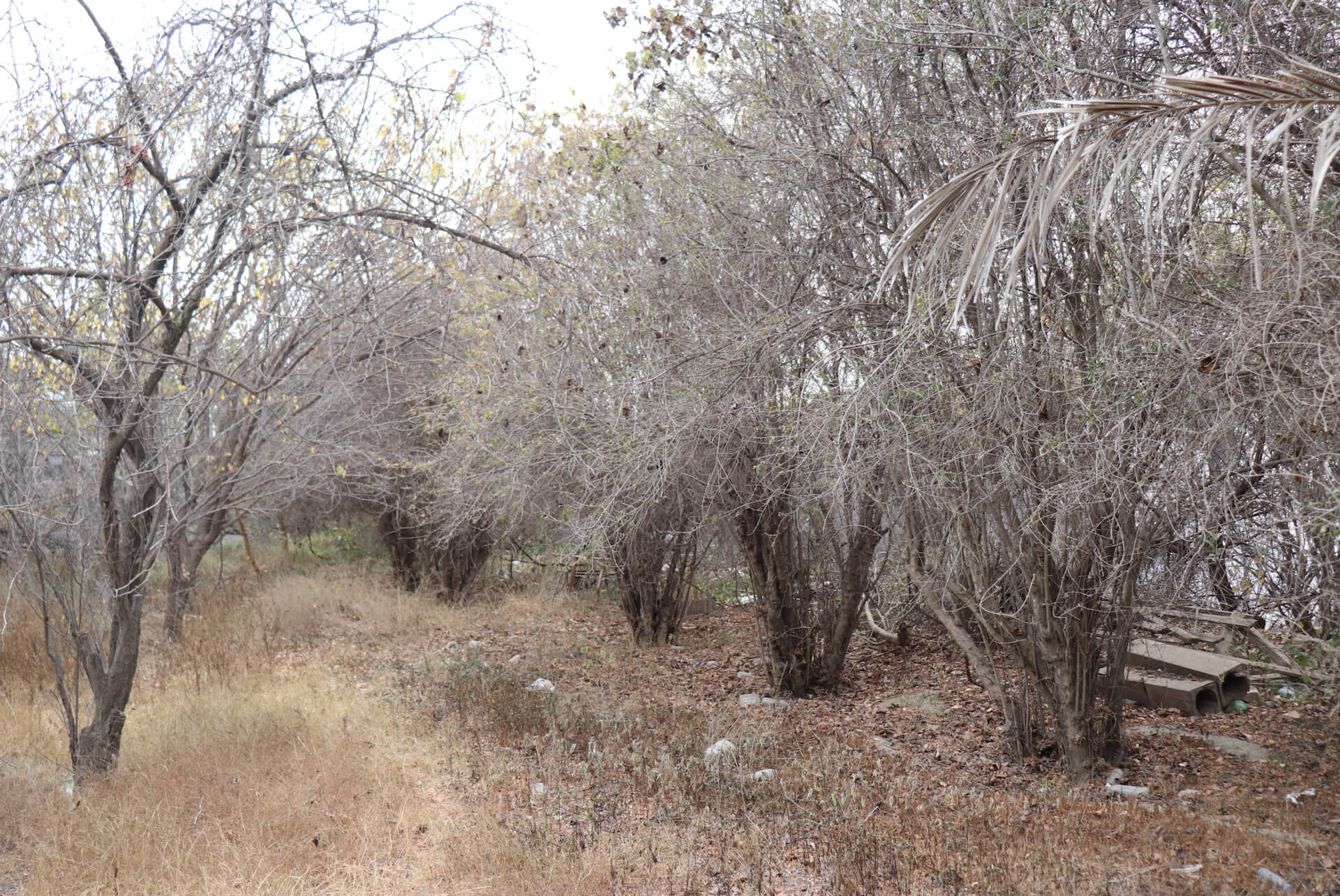
The artist's favorite spot in Abha.
Q3. Can you tell us about your background and how you got started as an artist?
I started my artistic practices by observing and experimenting, and working on developing the knowledge and practical side, as one of the members of Al-Muftaha Art Village. Then these practices became more stable and more popular in terms of art and its relationship to the future of the environment. So that this stability and demand is the result of the teamwork that was formed when establishing the (Fay) studio, which was established by the company of two artists, namely: Saeed Jabaan and Jamila Mater, to have a space of cognitive and technical dimensions with a collaborative orientation, aiming to help in the development of contemporary arts in the city of Abha.
Q4. What is your favorite place in Abha? And why?
What is interesting about the city of Abha is that it includes a variety of environments, which you possess as soon as you reach it. The location of Abha is distinguished by its mountainous environment overlooking the coasts and plains, and close to the desert. This diversity has the advantage of breaking the monotony in living, and achieving a different concept about looking at the nature of places and the way they are taken care of. Therefore, I find the best spot that I like to visit is the farms that are a few distance away from my studio, where I find a special meeting between modern architecture and farms that bear a glimpse of the past. I also find in that region a fertile environment for research and work on finding close links between contemporary arts and their connection to the environment in terms of form and application.
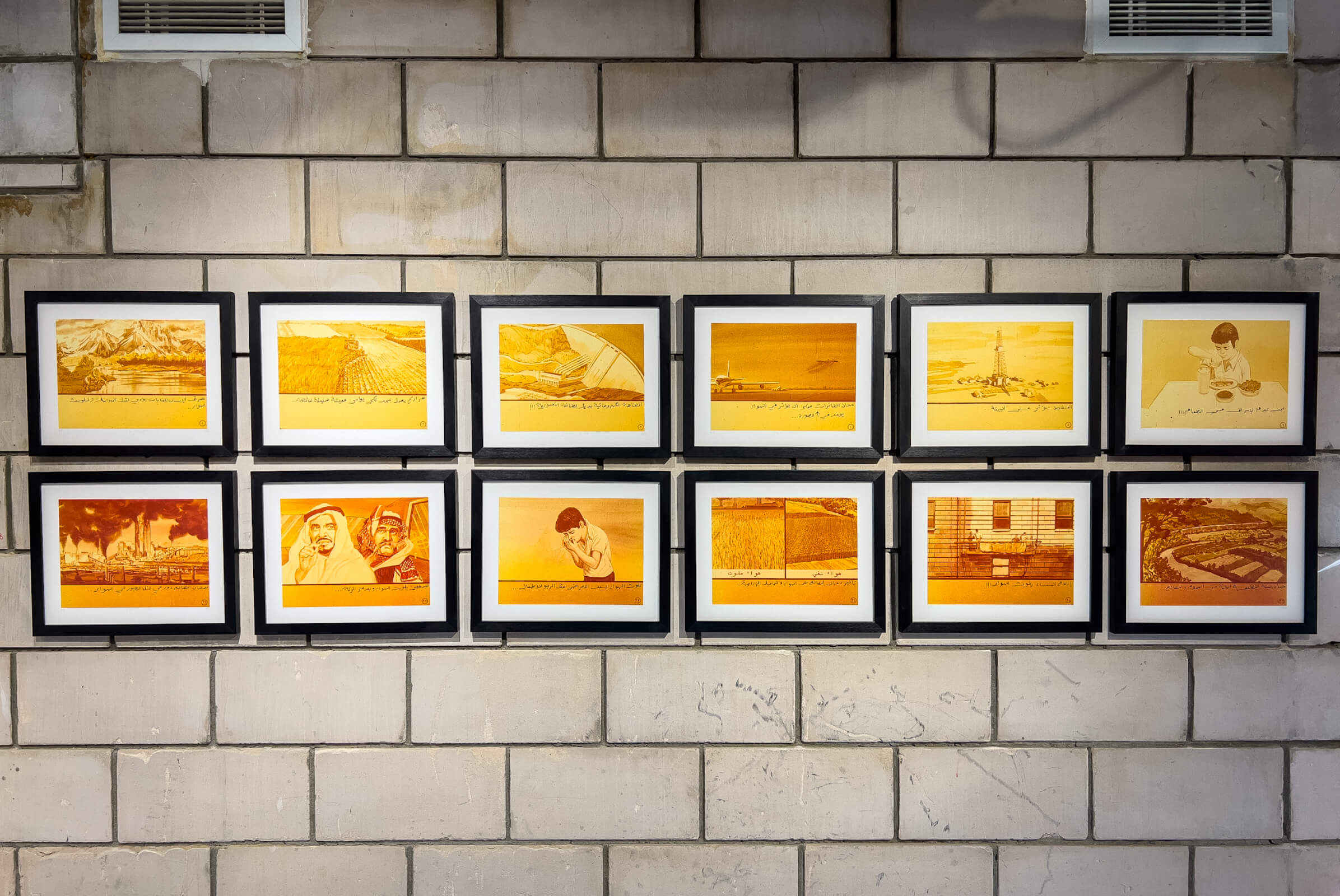
Lesson per week, inkjet prints on archival paper. From Masaha Residency showcase. 2022.
Q5. What does art mean to you?
I find in art a wide space through which to research the ways and methods of life. Contemporary art has become a comprehensive view that deals with many aspects of life, and attempts to capture them in a way that can be seen within frameworks with different media in terms of composition, but agree on clarity and access to all spectrums of society. Therefore, I find that art is a fertile space through which we can achieve what we can and cannot imagine happening. Art, in my opinion, is an undefined term, which makes it different and transcends cultures and borders.
Q6. Who is the artist that you consider your role model in art?
Each era has its artistic direction, effects and history from the experiences of artists, which makes it difficult for the artist to think of a specific role model, but I find in the practices of some artists interesting aspects where I see the spontaneity of Wolfgang Laib, a motivating thing to search for details and stick to the roots of concepts and ideas. And I find that other practices that contradict that simplicity are a good thing, in terms of form and application, as I see in the work of Anselm Kiefer a meaningful dimension associated with the originality of ideas. The method of conveying it in a contemporary way shows the impact of the past on the formation of the course of the present, and the way for man to return to zero point permanently. I always find in the practices of any artist aspects that make his work of a character that has its splendor and uniqueness.
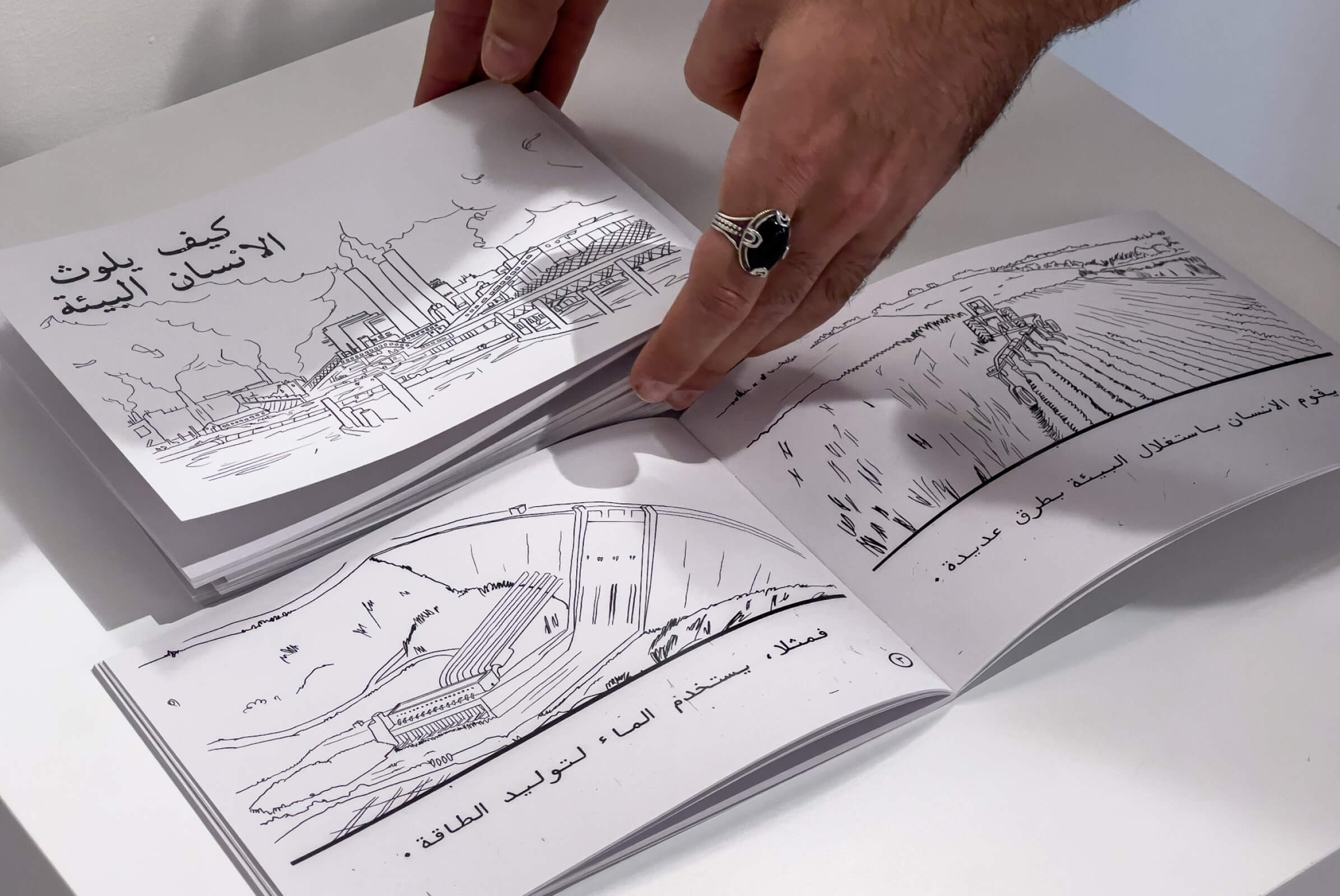
Lesson per week, coloring booklet, 23 pages, 21X 29.8cm.
Q7: How does the Arabic language, poetry, culture and literature influence your work? Why?
The Arabic language has a literary character that makes it a language that can easily cross many fields of knowledge. Therefore, I find myself compatible with expressing it on a personal level. I also find in Arabic poetry and literature many aspects that can transform from the audible culture to a dimension embodied in flexible forms, which makes the transformation of these subjects into a visual form an interesting matter, and brings other cultures closer to navigating Arab culture, and discovering many of its aspects. My works may approach, in one way or another, literary subjects, as I am more interested in the future of the environment and the way humans deal with it.
Q8. What artwork you painted (or own) brings you the most happiness, and why?
The experience of the first solo exhibition was one of the most enjoyable experiences that I worked on, as the experience was like a journey that collects the products of the previous stages and puts them within an appropriate framework, which makes this experience of importance that reflects on my vision of my practices and their anticipation in the future. My first solo exhibition was under the title (Why Afraid of We), the exhibition provides a look at the loss of hope in a better future for the environment in light of the deterioration we are witnessing due to some human practices that harm the environment as a whole.
This project was followed by a greater stability in terms of the subjects I work on, within the framework of a space or in group exhibitions such as the exhibition (Look for Me in the Fog).
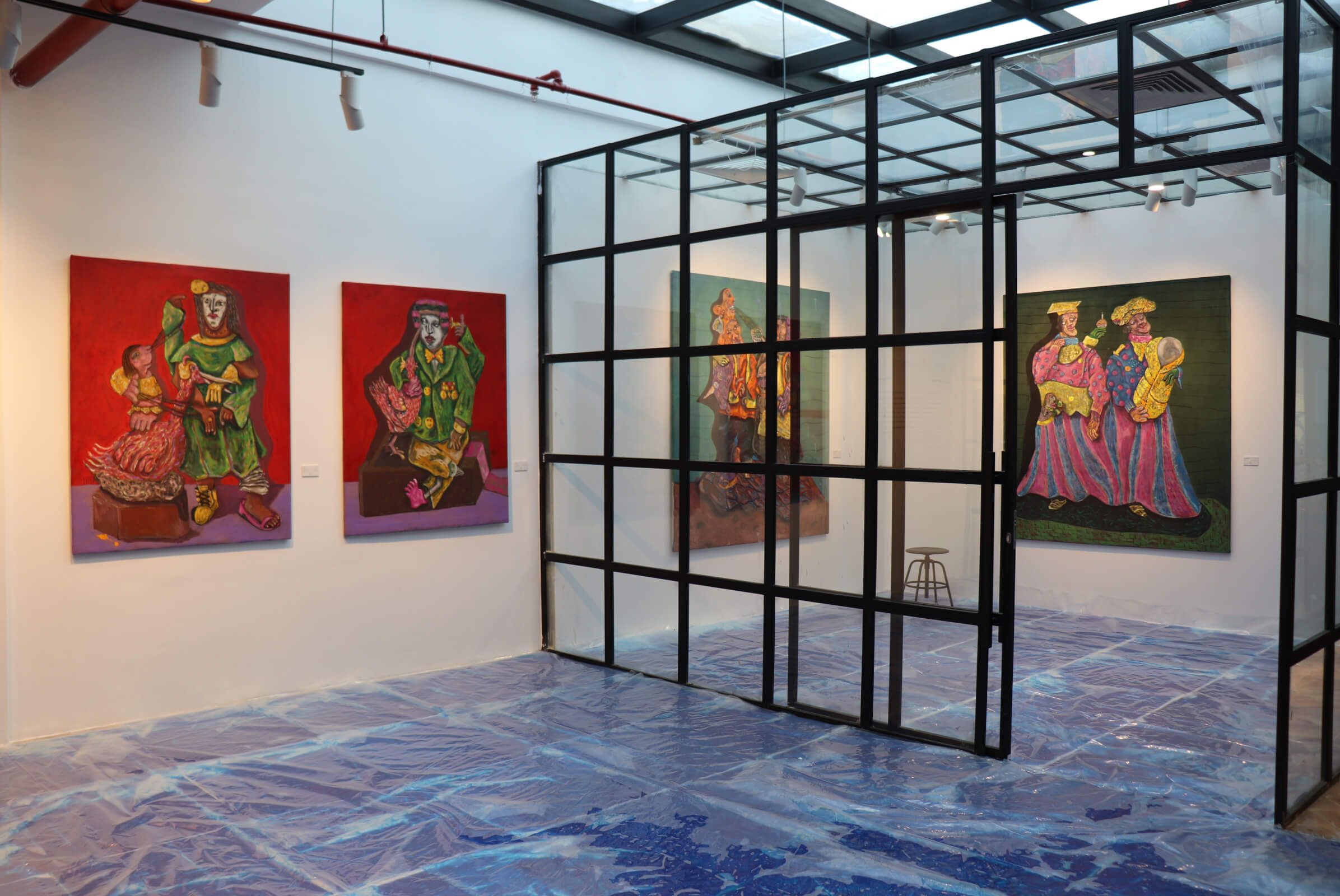
From the artist first solo exhibition “What is there to fear of damp”, 2022. Courtesy of the artist
Q9: What are your future plans? Are there any exhibitions, new works, or workshops?
I am currently working on some art projects between Riyadh and Jeddah. It will appear at the right time. Where I see the flexibility between my future plans on a personal level and the opportunities that would support my career as an artist.
Abha is one of the most beautiful and interesting places in the Kingdom Saudi Arabia, and it is really worth a visit to enjoy its natural and historical beauty.
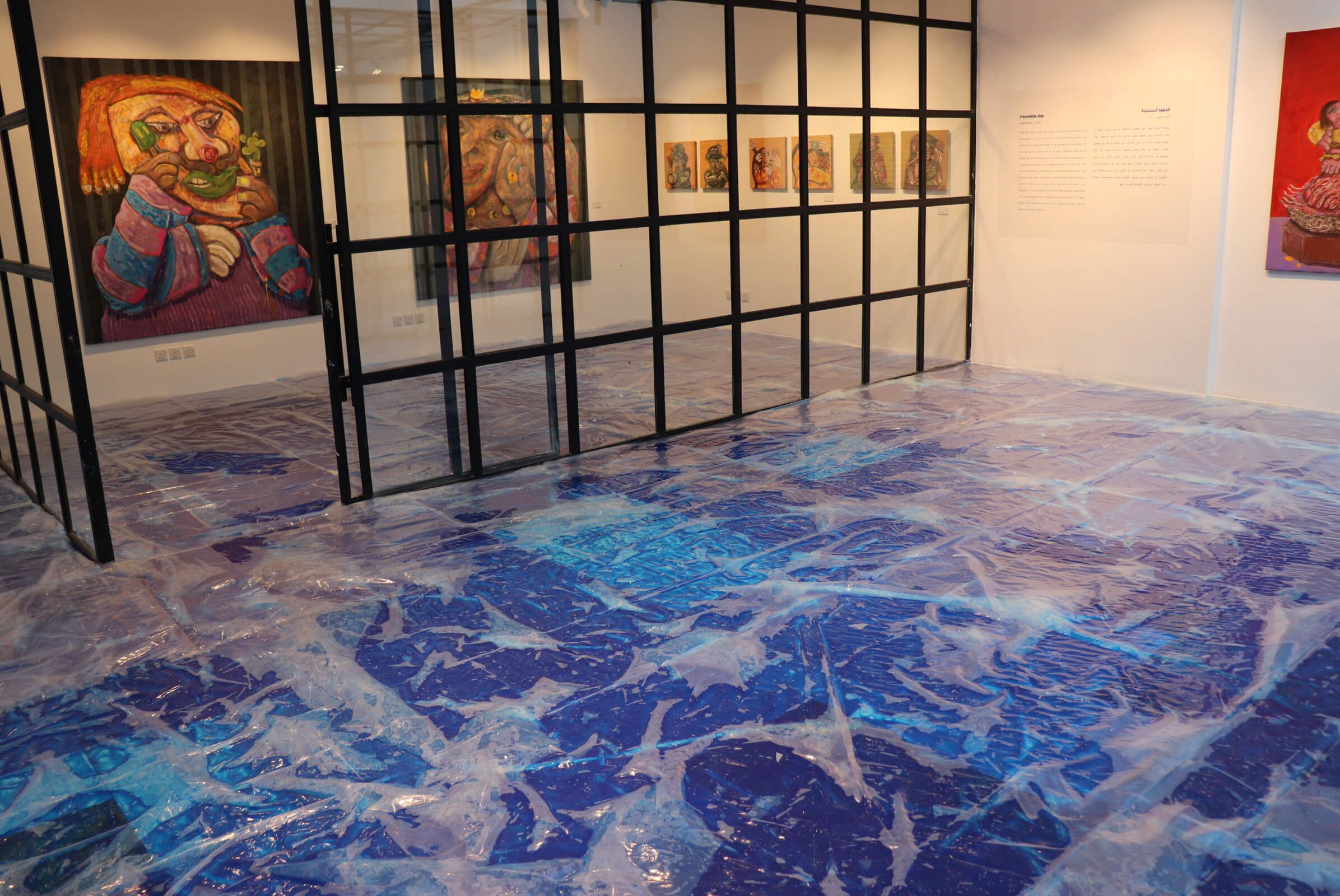
From the artist first solo exhibition “What is there to fear of damp”, 2022. Courtesy of the artist
